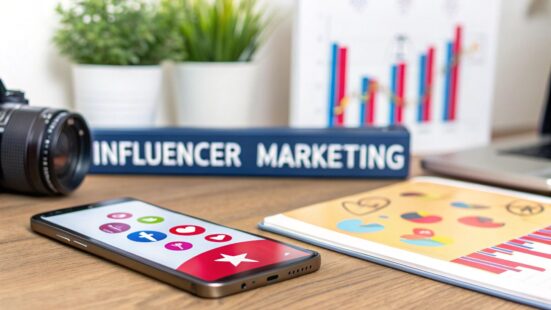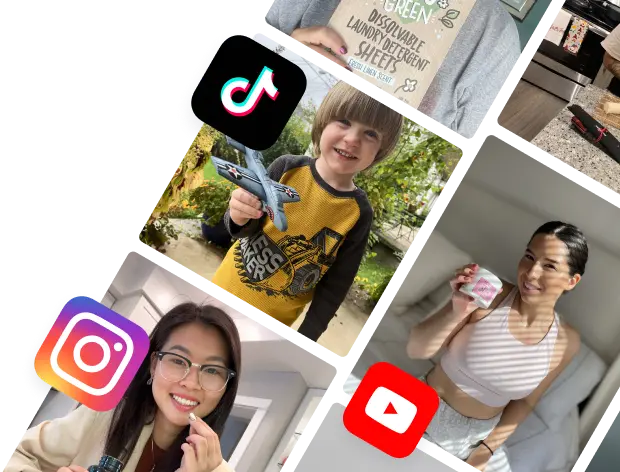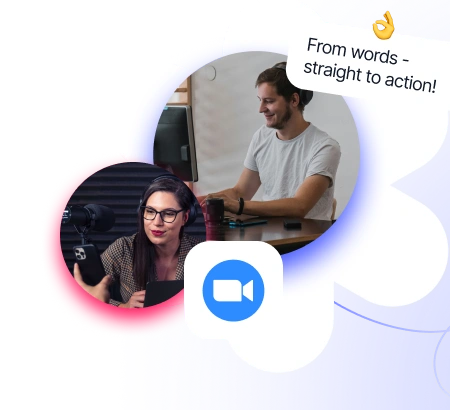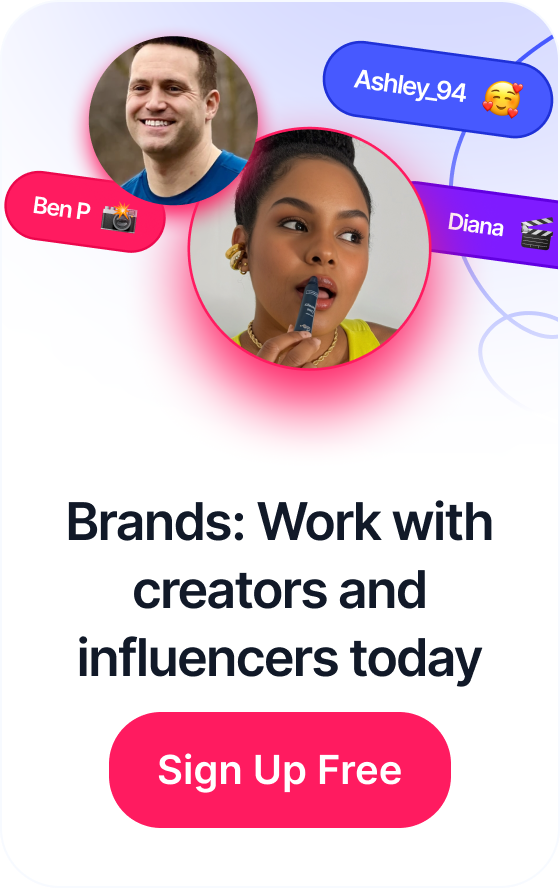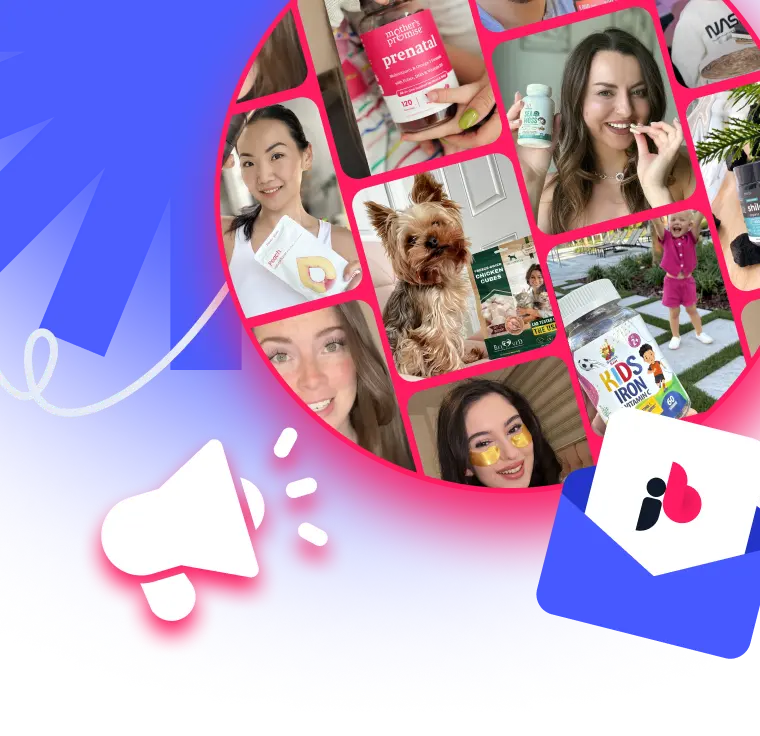 A Guide to Content Performance Metrics
A Guide to Content Performance Metrics
In 2025, influencer marketing has evolved from a trendy tactic into a core pillar of modern digital strategy. While the concept seems simple, partnering with trusted voices to reach their audiences, its true value lies in a multi-faceted approach that builds trust, drives engagement, and delivers measurable ROI. Many brands still view it as just another advertising channel, but its power extends far beyond simple product placement.
This article dissects the seven most significant benefits of influencer marketing, providing a strategic roadmap for brands looking to harness its full potential. We will move past surface-level observations to offer data-backed insights, real-world examples from industry leaders, and actionable steps to help you build authentic, high-impact campaigns.
By understanding these core advantages, you can transform your approach from transactional to transformational, creating lasting connections that accelerate growth. For brands looking to streamline this entire process, from discovery to campaign management, platforms like JoinBrands offer an all-in-one solution to connect with over 250,000 creators and manage workflows efficiently. You will learn precisely how these partnerships can deliver on key business objectives, from boosting authenticity to driving direct sales.
Table of Contents
1. Enhanced Brand Authenticity and Trust
In an age where consumers are saturated with traditional advertisements, one of the most significant benefits of influencer marketing is its ability to build genuine brand authenticity and trust. Unlike polished corporate messaging, influencer content feels like a recommendation from a trusted friend, cutting through the noise of conventional ads.
This power stems from the established relationship between creators and their followers. Influencers have invested time in building communities around shared interests and values, earning their credibility. When they endorse a product, their recommendation is perceived as an honest, personal experience rather than a paid-for promotion. This human-centric approach makes the brand's message more relatable and memorable.
How to Build Authenticity Through Influencers
The key is to treat partnerships as true collaborations, not transactions. Instead of handing over a rigid script, provide influencers with a clear brief on the key messages and goals, then grant them the creative freedom to integrate your product into their native content style. This ensures the final output resonates with their audience and feels genuine.
For example, the beauty brand Glossier built its empire by partnering with micro-influencers who created authentic, unfiltered makeup tutorials and "get ready with me" videos. This strategy made the products feel accessible and aspirational, driven by real user experiences rather than top-down advertising.
Actionable Implementation Strategy
To leverage this benefit effectively, brands must prioritize genuine alignment and foster long-term relationships.
- Focus on Value Alignment: Before examining follower counts, vet potential partners to ensure their personal brand, content style, and audience values mirror your own. A mismatch here can immediately signal inauthenticity to discerning followers.
- Embrace Long-Term Partnerships: Move away from one-off sponsored posts. Building long-term ambassador programs allows an influencer to integrate your brand into their lifestyle over time. This sustained visibility deepens audience trust, as seen with Gymshark’s consistent collaborations with fitness athletes who genuinely use their apparel.
- Prioritize Storytelling Over Selling: Encourage creators to share personal stories related to your product. A fitness influencer sharing their journey using your protein powder is far more compelling than a simple post saying, "buy this product." This narrative-driven approach is what establishes an emotional connection and builds lasting brand trust.
2. Precise Audience Targeting
One of the most powerful benefits of influencer marketing is the ability to bypass the broad strokes of traditional advertising and reach highly specific, engaged audiences. Each influencer cultivates a community united by shared interests, values, and demographics, effectively creating pre-segmented markets. This allows brands to connect directly with their ideal customers with unparalleled precision.
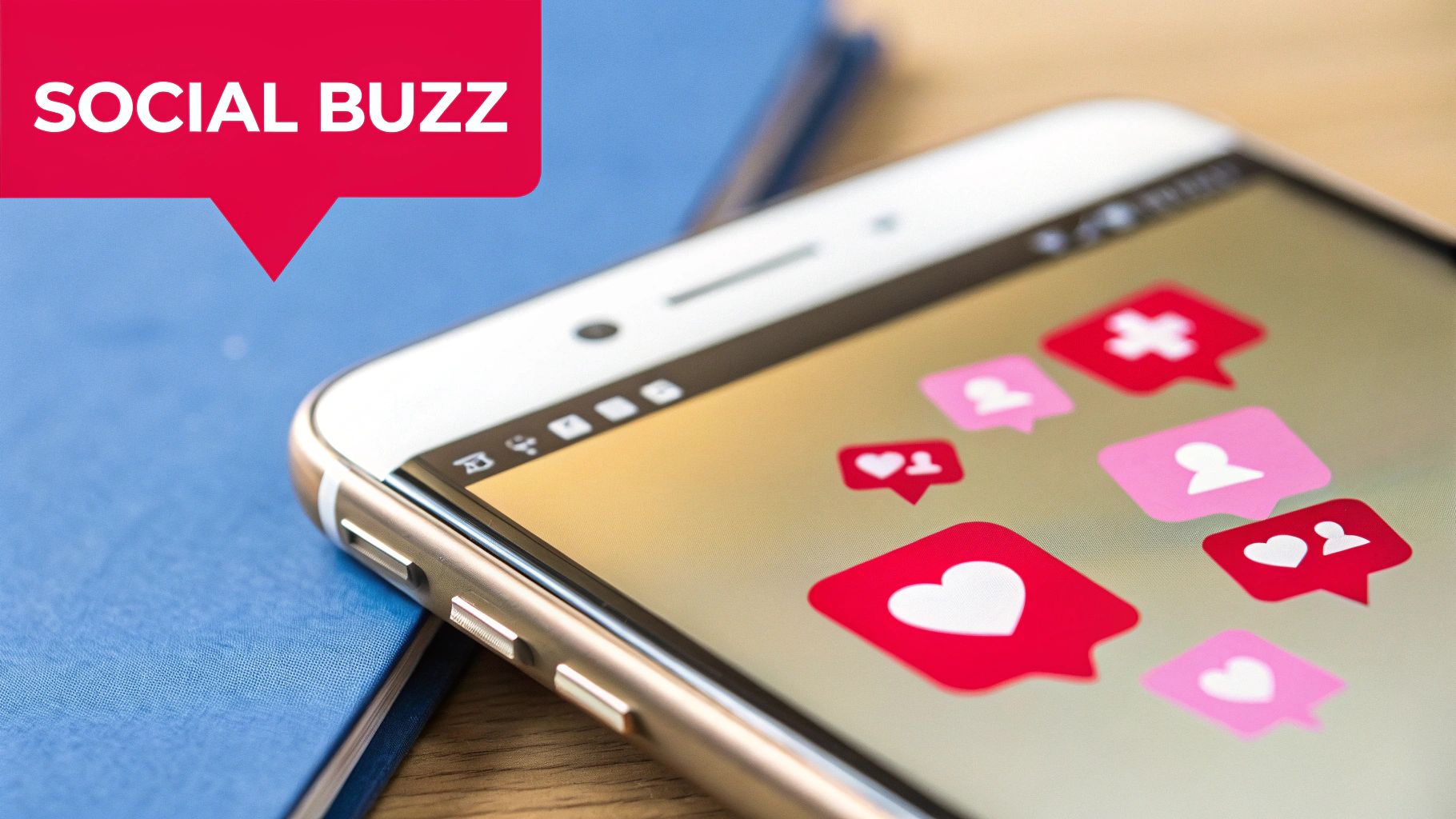
Unlike conventional methods that rely on algorithms to find potential customers, influencer marketing taps into existing, human-curated communities. A brand's message is delivered within a context that is already relevant and interesting to the audience, leading to higher engagement rates and a stronger return on investment. This targeted approach minimizes wasted ad spend and maximizes impact.
How to Achieve Precision Through Influencers
The goal is to find creators whose audiences perfectly mirror your ideal customer profile. This moves beyond basic demographics like age and gender to include psychographics such as lifestyle, hobbies, purchasing behavior, and brand affinities. The more aligned the audience, the more resonant the campaign.
For example, meal-kit service HelloFresh achieves this by partnering with food bloggers and busy parent influencers. Their followers are actively seeking convenient meal solutions, making them a pre-qualified, high-intent audience. This is far more effective than a generic ad hoping to catch the attention of someone interested in cooking.
Actionable Implementation Strategy
To capitalize on this benefit, brands must conduct thorough audience research and select partners strategically.
- Analyze Audience Demographics: Use influencer marketing platforms or request media kits to access detailed analytics on a creator's audience. Look beyond follower count and verify that the age, gender, location, and interests align with your target market.
- Leverage Micro-Influencers for Niche Markets: For highly specific products, such as vegan-friendly hiking gear, micro-influencers are invaluable. They command smaller but extremely dedicated communities, offering direct access to passionate, niche consumers.
- Prioritize Geographic Relevance: For local businesses or location-specific campaigns, partner with influencers who have a strong following in your target city or region. This ensures your message reaches people who can actually visit your store or use your service.
3. Improved Social Media Engagement
One of the most immediate and tangible benefits of influencer marketing is the significant boost it provides to social media engagement. Influencer content consistently outperforms brand-owned posts in likes, comments, shares, and saves because it is delivered through a trusted, human channel. Followers are more inclined to interact with a post from a creator they admire than with a direct advertisement from a corporate account.
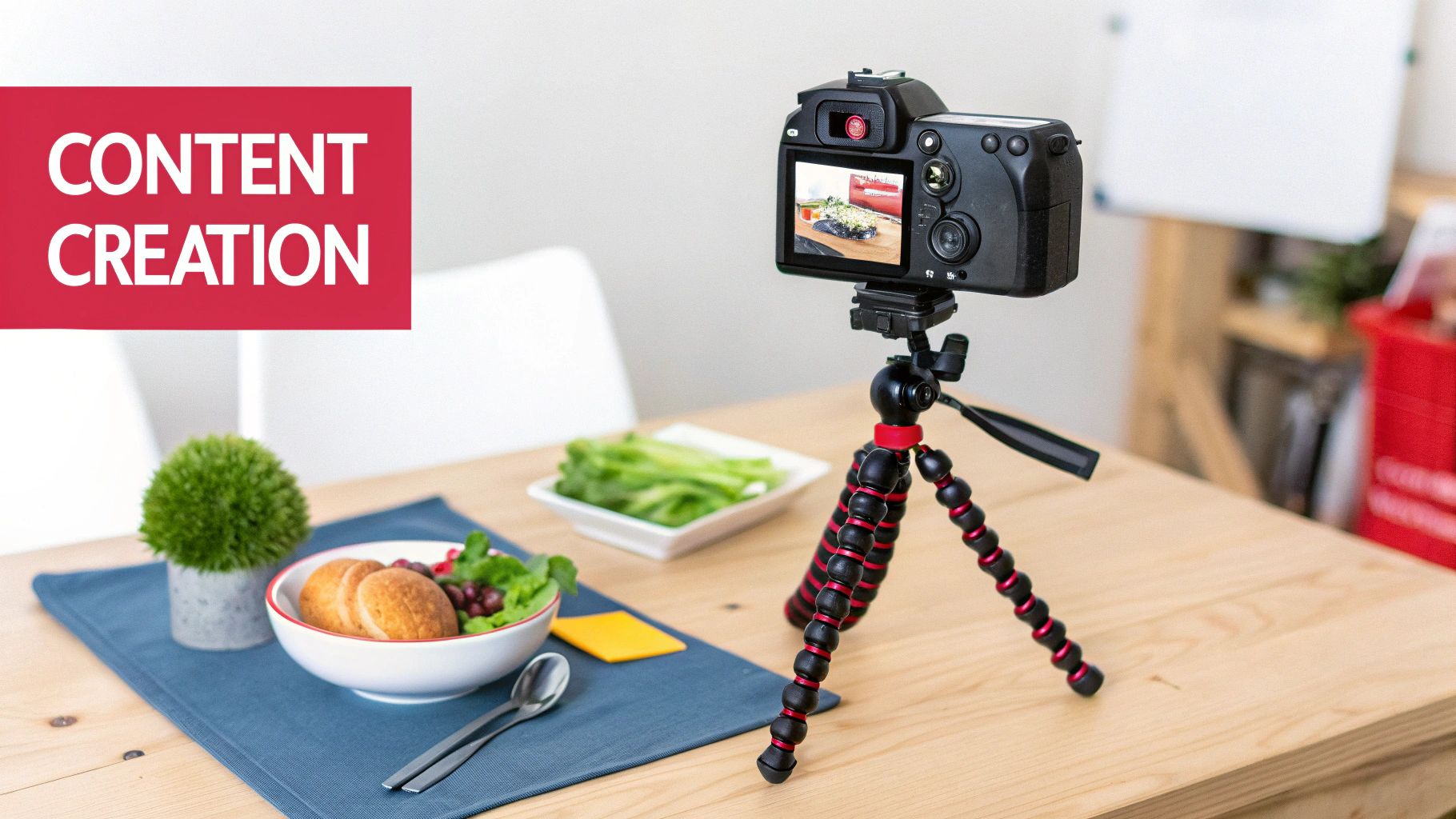
This heightened interaction is not just a vanity metric; it signals to social media algorithms that the content is valuable and relevant. As a result, platforms like Instagram and TikTok are more likely to push the content to a wider audience, increasing its organic reach and visibility. This creates a powerful flywheel effect where high engagement leads to better reach, which in turn generates even more engagement.
How to Drive Engagement Through Influencers
The secret is to empower creators to produce content that naturally invites interaction. Instead of focusing solely on the product, collaborations should be built around engaging formats that align with what the influencer's audience already loves. This shifts the focus from a simple promotion to a community-driven conversation.
For example, when Kylie Cosmetics partners with beauty influencers, the posts often feature interactive elements like makeup tutorials asking for follower feedback or "ask me anything" sessions about beauty routines. Similarly, Airbnb's travel influencer campaigns generate massive engagement by showcasing breathtaking destinations and asking followers to share their own dream travel spots, sparking widespread conversation and sharing.
Actionable Implementation Strategy
To maximize this benefit, brands must be strategic about both partner selection and campaign design.
- Prioritize Engagement Rate Over Follower Count: A creator with 50,000 highly engaged followers is often more valuable than one with 500,000 passive ones. Analyze an influencer’s average likes, comments, and shares per post to gauge the true health of their community before partnering.
- Encourage Interactive Content Formats: Actively build interactive elements into your campaign briefs. Suggest that influencers use features like polls, quizzes, Q&As, and live streams to directly engage their audience and make them feel like part of the experience.
- Design for Shareability: Work with creators to produce content that is highly shareable, such as stunning visuals, valuable tips, or relatable memes. When Starbucks collaborates on seasonal drink launches, the resulting vibrant and aesthetically pleasing content is something users are excited to repost to their own stories, creating a viral organic loop.
4. Cost-Effective Marketing Solution
Among the most compelling benefits of influencer marketing is its potential to deliver a superior return on investment (ROI) compared to many traditional advertising channels. Brands can generate significant reach, engagement, and conversions at a fraction of the cost associated with large-scale TV, print, or even broad-reach digital ad campaigns. This efficiency makes it an accessible and powerful strategy for businesses of all sizes.

This affordability is largely driven by the scalability of influencer partnerships, particularly with micro and nano-influencers. These creators often command lower fees than celebrities but deliver highly targeted engagement within niche communities. Their audiences are typically more dedicated and responsive, meaning a smaller investment can produce more meaningful results and a lower overall customer acquisition cost.
How to Achieve Cost-Effectiveness with Influencers
The key to unlocking this benefit is strategic partner selection and smart negotiation. Rather than focusing solely on follower count, brands should prioritize engagement rates and audience relevance. A campaign with a nano-influencer that costs a few hundred dollars can outperform a celebrity endorsement costing thousands if the smaller creator's audience is a perfect match for the product.
For example, breakout brands like Warby Parker and Casper initially leaned on cost-effective influencer collaborations to build buzz. They partnered with creators who aligned with their brand ethos, generating authentic content that reached targeted demographics without the hefty price tag of a traditional media buy. This approach allowed them to scale awareness efficiently and compete with established industry giants.
Actionable Implementation Strategy
To maximize ROI, brands must approach influencer marketing with a clear financial and performance-based framework.
- Prioritize Micro-Influencers for Efficiency: Start by allocating a portion of your budget to micro-influencers (10k-100k followers). Their high engagement rates and lower costs offer a powerful combination for testing campaign messages and driving conversions.
- Negotiate Performance-Based Compensation: Where possible, structure deals that include a performance component, such as a commission on sales generated through an affiliate link. This directly ties your marketing spend to tangible outcomes, mitigating financial risk.
- Track ROI Metrics Diligently: To truly understand the financial impact, you must consistently measure your return. When evaluating performance, a detailed customer acquisition cost calculation is essential for comparing influencer campaigns against other marketing channels and justifying future investment.
5. Content Creation and User-Generated Content
One of the most valuable and often overlooked benefits of influencer marketing is gaining access to a steady stream of high-quality, professional-grade content. Influencers are, at their core, skilled content creators who produce authentic, engaging assets that brands can repurpose across their own marketing channels, from social media feeds to email newsletters and product pages.
This content serves as a powerful alternative to expensive and time-consuming in-house photoshoots. Influencer-generated content (IGC) naturally showcases products in real-world scenarios, giving them a lifestyle-oriented feel that resonates more deeply with audiences than polished, studio-shot advertisements. This approach provides a content library that is both cost-effective and inherently authentic.
How to Leverage Influencers as Content Creators
The goal is to treat each collaboration as a content production opportunity, not just a promotional post. By planning ahead, brands can acquire a diverse range of assets that extend the value of the partnership far beyond its initial run date. This strategy effectively turns influencers into a distributed, on-demand creative team.
For instance, the action camera giant GoPro built its entire marketing ethos around user-generated content, heavily featuring breathtaking photos and videos from adventurers and athletes. Similarly, fashion retailer ASOS frequently integrates influencer photos directly onto its product pages, showing customers how clothing looks on different body types in real-life settings, which adds social proof and boosts conversion rates.
Actionable Implementation Strategy
To maximize your content output, you must establish clear expectations and have a system for managing the assets you receive.
- Secure Content Usage Rights: This is non-negotiable. Your influencer contract must explicitly state where, how, and for how long you can use the content they create. Clearly define rights for paid ads, organic social media, website use, and email marketing to avoid legal issues later.
- Request Multiple Content Formats: Don't settle for a single feed post. Ask for a package that includes high-resolution photos, short-form videos (like Reels or TikToks), and behind-the-scenes Stories. This gives you a variety of assets optimized for different platforms and campaign needs.
- Establish a Content Archive: Create a centralized system, like a cloud-based drive or a digital asset management (DAM) platform, to organize and tag all influencer-generated content. This makes it easy for your marketing team to find and repurpose relevant visuals for future campaigns, ensuring you get maximum ROI from each collaboration.
6. Increased Brand Awareness and Reach
One of the most powerful and immediate benefits of influencer marketing is the ability to exponentially expand your brand's visibility and reach. By partnering with creators, you tap into highly engaged, pre-built communities that your brand might struggle to access through organic efforts alone. Each influencer acts as a distribution channel, introducing your products to new potential customers.
This method is particularly effective for emerging brands or companies entering new markets. Instead of slowly building an audience from scratch, an influencer partnership provides an instant introduction to a relevant and receptive demographic. This strategic amplification can dramatically shorten the time it takes to build widespread brand recognition.
How to Drive Awareness Through Influencers
The goal is to create content that is not only seen but also shared, extending your reach far beyond the influencer's immediate followers. This involves creating memorable campaigns that encourage audience participation and virality.
For example, Fashion Nova achieved meteoric growth by collaborating with thousands of influencers across Instagram. Their strategy involved flooding feeds with consistent, brand-aligned content, making the brand ubiquitous within its target demographic almost overnight. Similarly, TikTok challenges initiated by creators can generate massive user-generated content, turning a single campaign into a viral phenomenon that builds brand awareness on an enormous scale.
Actionable Implementation Strategy
To maximize brand awareness, your approach must be strategic, consistent, and designed for shareability.
- Partner with Influencers in Adjacent Niches: Look beyond your core audience. A sustainable home goods brand could partner with a finance influencer focused on conscious spending. This cross-pollination introduces your brand to new, untapped markets that share similar underlying values.
- Create Memorable Hashtags and Challenges: Develop a unique, catchy hashtag or a simple challenge that encourages user participation. When followers start using your hashtag or creating their own versions of the challenge, your brand's reach grows organically and exponentially.
- Maintain Consistent Messaging: Ensure your core brand message, value proposition, and aesthetic are communicated consistently across all influencer partnerships. This repetition reinforces brand identity and makes it more memorable to new audiences seeing it for the first time.
7. Direct Sales Impact and Conversion
Beyond brand awareness, one of the most compelling benefits of influencer marketing is its ability to directly drive measurable sales and boost conversion rates. By leveraging trusted voices, brands can transform follower engagement into tangible revenue, often with a higher return on investment than traditional paid advertising channels.
This sales impact is rooted in the persuasive power of personal endorsements. When an influencer shares a product they genuinely seem to love, their audience views it as a trusted recommendation, not just an ad. This high-intent environment, combined with clear calls-to-action like affiliate links or discount codes, effectively shortens the customer journey from discovery to purchase.
How to Drive Sales Through Influencers
The most effective strategy is to equip influencers with tools that make purchasing seamless and appealing for their audience. This involves turning their content into a direct point of sale, creating a sense of urgency and exclusivity that motivates immediate action.
For instance, fast-fashion brands like Fashion Nova and Revolve have perfected this model. They partner with a vast network of fashion influencers who post "outfit of the day" content featuring direct shopping links. This strategy turns an Instagram feed into an interactive, shoppable catalog, leading to immediate sales and making the brands synonymous with influencer-driven e-commerce.
Actionable Implementation Strategy
To effectively convert influencer content into sales, brands need a performance-focused and trackable approach.
- Implement Trackable Codes and Links: Assign a unique discount code or trackable affiliate link to each influencer. This not only incentivizes purchases for their followers but also allows you to precisely measure the ROI and sales volume generated by each partner, enabling data-driven optimization.
- Create Time-Sensitive Offers: Fuel urgency by providing influencers with exclusive, limited-time promotions. A 24-hour flash sale or a special discount for the first 100 buyers can significantly increase conversion rates by tapping into the audience's fear of missing out (FOMO).
- Leverage Shoppable Content Platforms: Use platforms like LTK (formerly rewardStyle) or direct shopping features on Instagram and TikTok. These tools allow followers to purchase items directly from an influencer's post, removing friction from the buying process and capturing impulsive purchase decisions more effectively.
Benefits Comparison of 7 Influencer Marketing Advantages
| Aspect | Enhanced Brand Authenticity and Trust | Precise Audience Targeting | Improved Social Media Engagement | Cost-Effective Marketing Solution | Content Creation and User-Generated Content | Increased Brand Awareness and Reach | Direct Sales Impact and Conversion |
|---|---|---|---|---|---|---|---|
| Implementation Complexity 🔄 | Medium – requires influencer alignment and monitoring | Medium – needs detailed audience analysis | Low to Medium – focus on engagement-driven content | Low to Medium – scalable but needs budget tracking | Medium – requires contracts and creative direction | Low to Medium – broad partnerships managing | Medium – tracking attribution across multiple sources |
| Resource Requirements ⚡ | Moderate – influencer vetting and relationship management | Moderate – audience data and influencer research | Low – content creation mainly by influencers | Low to Moderate – budget flexibility and negotiation | Moderate – content usage management | Low – broad influencer outreach | Moderate – tools for tracking sales and affiliate links |
| Expected Outcomes 📊 | ⭐⭐⭐⭐ – stronger trust and emotional connection | ⭐⭐⭐⭐ – precise reach and higher conversion potential | ⭐⭐⭐⭐ – higher engagement and visibility | ⭐⭐⭐⭐ – better ROI and cost efficiency | ⭐⭐⭐⭐ – diverse, authentic content for multi-channel use | ⭐⭐⭐⭐ – expanded reach and brand recognition | ⭐⭐⭐⭐⭐ – measurable sales uplift and conversion |
| Ideal Use Cases 💡 | Building long-term brand trust and loyalty | Targeting niche or specific demographics | Boosting social media visibility and interaction | Budget-conscious campaigns aiming for ROI | Content diversification and refreshed marketing assets | Launching new brands or expanding into new markets | Driving immediate purchases and tracking sales impact |
| Key Advantages ⭐ | Authenticity, credibility, emotional connection | Laser-focused targeting, reduced ad waste | Enhanced engagement, improved algorithmic reach | Cost efficiency, flexible budgets | High-quality, repurposable content | Rapid awareness growth, access to new segments | Direct, trackable impact on sales |
Turning Benefits into a Blueprint for Growth
The journey through the core advantages of influencer marketing reveals a powerful truth: this is no longer a fringe tactic but a fundamental pillar of modern digital strategy. We've explored how a well-executed influencer program does far more than just boost vanity metrics. It systematically builds brand equity, forges genuine connections, and directly impacts your bottom line.
Recapping the powerful benefits we've covered, it's clear they form an interconnected ecosystem. Enhanced brand authenticity and trust lay the foundation, making every subsequent marketing message more resonant. This trust is amplified by precise audience targeting, ensuring your message reaches not just anyone, but the right people who are primed to listen and engage. This targeted approach naturally fuels improved social media engagement, creating a vibrant community around your brand and generating valuable social proof.
From there, the momentum builds. The inherent cost-effectiveness of influencer marketing, especially when compared to traditional advertising, allows brands of all sizes to compete on a more level playing field. Perhaps most significantly, you gain a scalable engine for content creation, filling your marketing channels with a steady stream of high-quality, user-generated content that performs exceptionally well because it’s inherently authentic. This cycle ultimately culminates in what every business seeks: increased brand awareness and a direct, measurable impact on sales and conversions.
From Theory to Action: Your Next Steps
Understanding these benefits is the first step; operationalizing them is what separates thriving brands from the competition. The key takeaway is to shift your perspective from viewing influencers as transactional ad placements to seeing them as long-term strategic partners. Success in this landscape is built on relationships, not just reach.
To translate these insights into a tangible growth strategy, focus on these critical actions:
- Define Your "Why": Before you even think about outreach, clarify your primary goal. Is it to build trust for a new product? Drive traffic to a landing page? Generate a library of UGC? Your objective will dictate your entire strategy, from the type of influencer you choose to the KPIs you track.
- Embrace a Data-Driven Approach: Move beyond follower counts. Use analytics to vet potential partners, ensuring their audience demographics and engagement patterns align perfectly with your target customer profile. Track performance meticulously to understand what’s working and double down on successful partnerships.
- Prioritize Creative Freedom: The magic of influencer marketing lies in the creator's unique voice and connection with their audience. Provide a clear brief with your goals and key messages, but then empower them to create content in the style that made their community fall in love with them in the first place. Micromanaging creativity is the fastest way to kill authenticity.
- Build for the Long-Term: One-off campaigns can provide a temporary lift, but an "always-on" program built on long-term relationships yields compounding returns. These partnerships create deeper brand affinity, generate more consistent results, and turn creators into true brand advocates.
By internalizing these principles, you transform the list of benefits of influencer marketing from a simple article into a practical blueprint. This approach allows you to build a resilient, authentic, and high-performing marketing engine that doesn't just chase trends but builds lasting brand value and drives sustainable growth.
Ready to move from understanding the benefits to actively managing a high-impact influencer program? JoinBrands provides the end-to-end platform you need to discover authentic creators, manage campaigns, approve content, and process payments all in one place. Streamline your entire workflow and turn your influencer marketing strategy into a scalable growth engine by exploring JoinBrands today.
